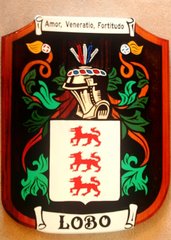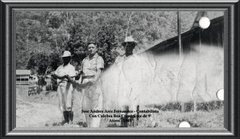Good leaders are aware that others do what they do. And they always keep in mind that:
1. Followers are Always Watching What Leaders Do
If you are a parent, you have probably already realized that your children are always watching what you do. And just as children watch their parents and emulate their behavior, so do employees who are watching their bosses. If the bosses come in late, then employees feel like they can, too. If the boss cuts corners, employees cut corners. People do what people see.
Followers may doubt what their leaders say, but they usually believe what they do. And they imitate it. Former U.S. Army General and Secretary of State Colin Powell observed, "You can issue all the memos and give all the motivational speeches you want, but if the rest of the people in your organization don't see you putting forth your very best effort every single day, they won't either."
2. It's Easier to Teach What's Right than to Do What's Right
Mark Twain quipped, "To do what is right is wonderful. To teach what is right is even more wonderful—and much easier." That's one of the reasons why many parents (and bosses) say, "Do as I say, not as I do."
One of my earliest challenges as a leader was to raise my living to the level of my teaching. I can still remember the day I decided that I would not teach anything I did not try to live out myself. That was a tough decision, but as a young leader I was learning to embrace the Law of the Picture. Norman Vincent Peale said, "Nothing is more confusing than people who give good advice but set a bad example." I say, "Nothing is more convincing than people who give good advice and set a good example."
3. We Should Work on Changing Ourselves Before Trying to Improve Others
Leaders are responsible for the performance of their people. The buck stops with them. Accordingly, they monitor their people's progress, give them direction, and hold them accountable. And to improve the performance of the team, leaders must act as change agents. However, a great danger to good leadership is the temptation to try to change others without first making changes to yourself.
As a leader, the first person I need to lead is me. The first person that I should try to change is me. My standards of excellence should be higher for myself than those I set for others. To remain a credible leader, I must always work first, hardest, and longest on changing myself. This is neither easy nor natural, but it is essential.
4. The Most Valuable Gift a Leader Can Give is Being a Good Example
A survey conducted by Opinion Research Corp. for Ajilon Finance asked American workers to select the one trait that was most important for a person to lead them. Ranked No. 1, with 26% of votes, was leading by example. Second, at 19%, was strong ethics or morals. More than anything else, employees want leaders whose beliefs and actions line up.
Leadership is more caught than taught. How does one "catch" leadership? By watching good leaders in action!
So as you approach the end of the calendar year and start thinking about the performance of the people you lead, stop for a moment of honest reflection and ask yourself this question: What kind of example am I setting? If you're setting a high standard for integrity, competence, work ethic, and professional growth, if you're being all that you desire your people to be, then you're setting up yourself, your people, and your organization for success. If not, you need to make some changes.
John C. Maxwell is an internationally recognized leadership expert, speaker, and author who has sold over 13 million books. His organizations have trained more than 2 million business, government, and military leaders worldwide. Dr. Maxwell writed My Leadership Perspective for BusinessWeek.com/Managing once a month.
Subscribe to:
Post Comments (Atom)






No comments:
Post a Comment